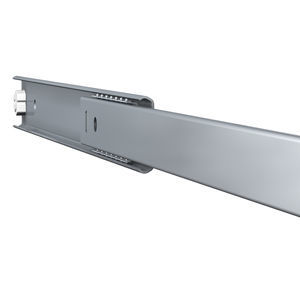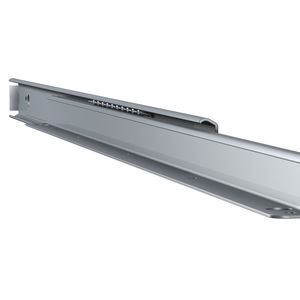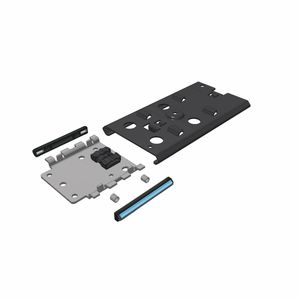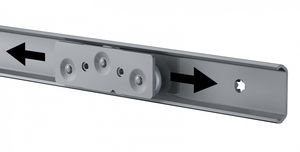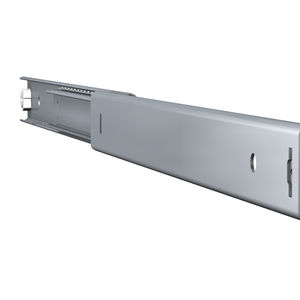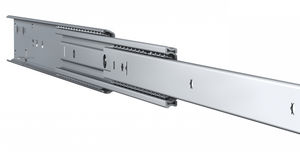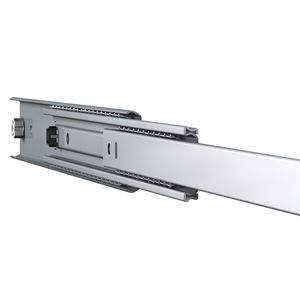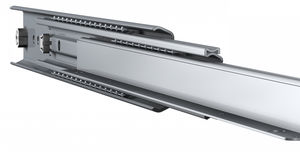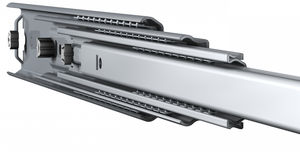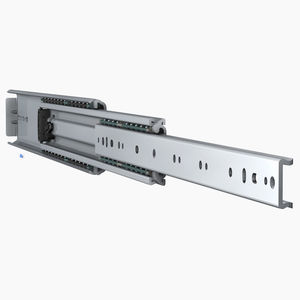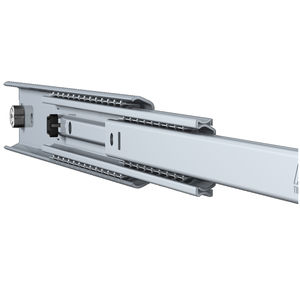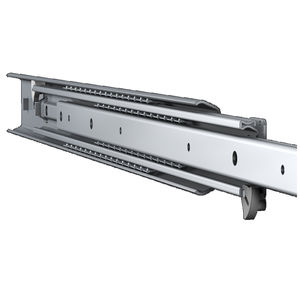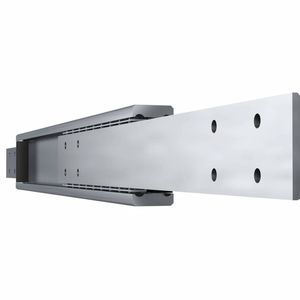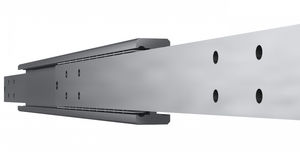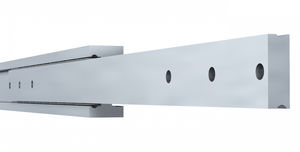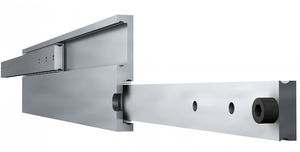
Telescopic slide ALLMAN TRAball bearingcustomdouble
Add to favorites
Compare this product
Characteristics
- Extension
- telescopic
- Type
- ball bearing
- Other characteristics
- double, custom
- Load
25 kg
(55.1 lb)- Width
12.7 mm
(0.5 in)- Working temperature
Max.: 100 °C
(212 °F)Min.: -20 °C
(-4 °F)
Description
The custom made ALLMAN is a full extension ball bearing drawer runner consisting with a travel up to 100%. The slide is part of our light-duty telescopic slide range.
Load capacity
Load capacity varies as a result of a number of factors. The main factors being the type of slide, length, and ratio between pull-out length and closed length. Another important factor is the number of cycles the slide is required to make. Thomas Regout distinguishes the type of usage between dynamic use and static use. Other factors that influence the load capacity are the features the slide is equipped with, and how it is mounted. Slides are usually mounted sideways so all data concerning load-capacity will be given for side mounted use. For information about the load capacity with bottom-mounted slides, please contact our sales department.
Dynamic load capacity
In order to determine the dynamic load capacity, all types of Thomas Regout slides have been tested for 100,000 cycles. Their maximum load capacity is compliant with, or exceeds, all common national and international standards including DIN, BIFMA, BS, EN and JIS. The dynamic load capacity figures can be found in the graph below.
Static load capacity
Static load capacity is based on test results at 500, 1000 and 10,000 cycles. This is most common for industrial purposes. The static load capacity is considerably higher than the dynamic load capacity for all slides. The static load capacity figures listed below were determined for a single length of that slide and are for indication purposes only. Specific applications can be assessed by our R&D department and tested if necessary.
Catalogs
No catalogs are available for this product.
See all of Thomas Regout‘s catalogsRelated Searches
- Ball bearing linear slide
- Telescopic linear slide
- Full-extension linear slide
- Drawer linear slide
- Locking device
- Steel linear slide
- Partial-extension linear slide
- Aluminum linear slide
- Stainless steel linear slide
- Heavy-duty linear slide
- Over-extension linear slide
- Double linear slide
- Furniture slide
- Two-way slide
- Simple slide
- Locking mechanism
- Slide with soft close
- Central locking mechanism
- Door locking mechanism
*Prices are pre-tax. They exclude delivery charges and customs duties and do not include additional charges for installation or activation options. Prices are indicative only and may vary by country, with changes to the cost of raw materials and exchange rates.



